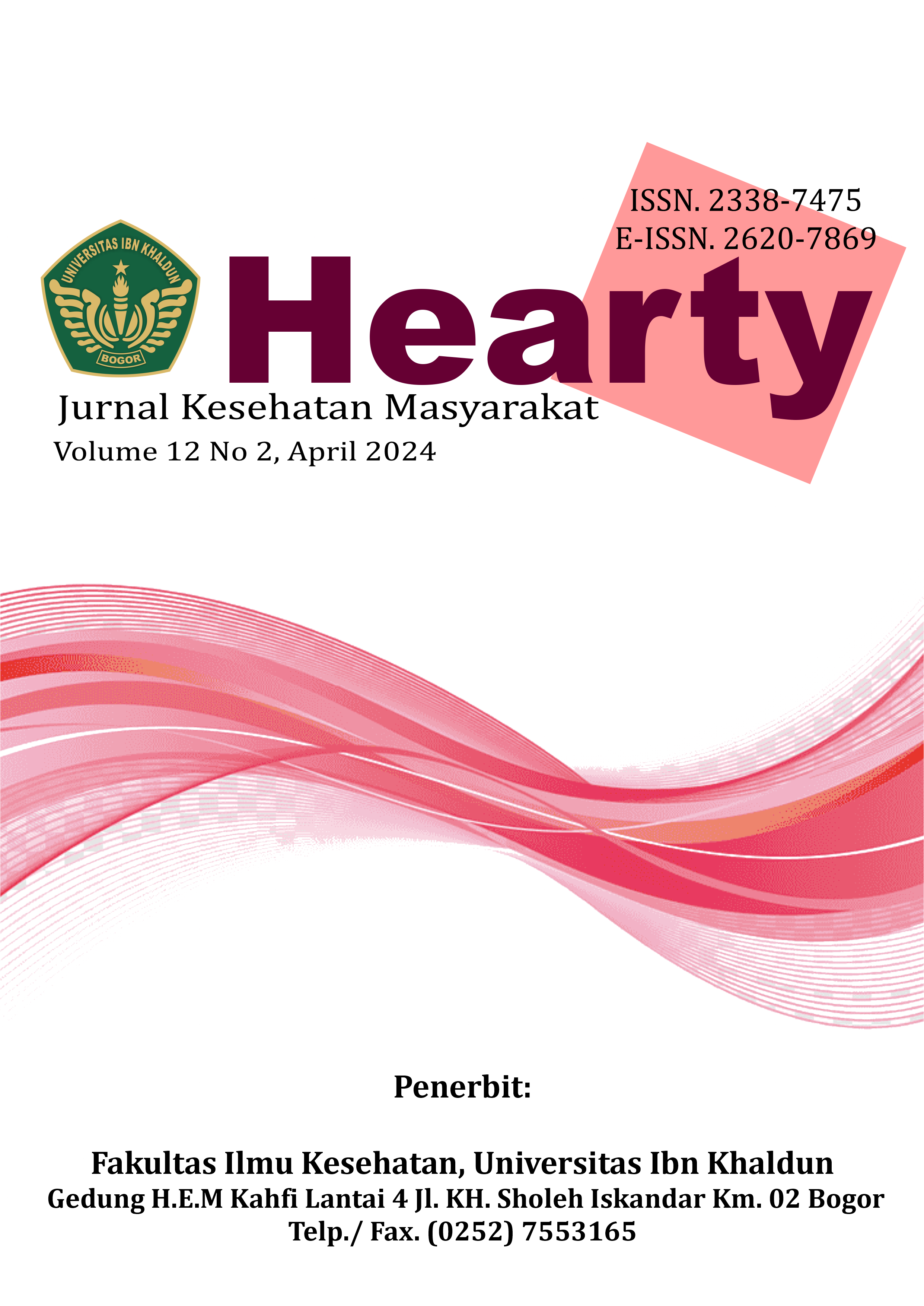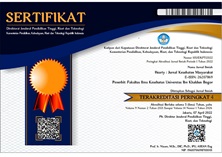THE RELATIONSHIP BETWEEN SANITARY HYGIENE AND PHYSICAL ENVIRONMENTAL CONDITIONS WITH COCKROACH DENSITY IN THE CANTEEN OF SRIWIJAYA UNIVERSITY INDRALAYA CAMPUS IN 2024
DOI:
https://doi.org/10.32832/hearty.v12i2.16380Abstract
The canteen is one of the strategic places in the spread of diseases carried by vectors and disease-carrying animals such as cockroaches. The spread of disease in the canteen is also influenced by environmental sanitation hygiene. A dirty and humid environment is a good breeding ground for cockroaches. The government has established a policy to reduce the vector population to minimize the risk of impact due to the disease it causes. Research to determine the relationship between sanitary hygiene and physical environmental conditions with cockroach density in the canteen of Sriwijaya University Indralaya campus was conducted. The study was an observational analytic study using a cross sectional study design. A total of 50 canteens on campus were used as samples and were total sampling. Data on sanitary hygiene standards were collected from observational sheets and measurements of physical environmental conditions were made using a hygro thermometer, while cockroach density was measured based on the sticky trap method. Data were analyzed univariately and bivariately using the Chi-Square test. The results showed that of the 50 canteens sampled, 6 canteens were classified as canteens with sanitary hygiene that did not meet the Permenkes requirements. This is indicated by the high cockroach density with a p-value of 0.000 <0.05. This means that sanitary hygiene significantly affects cockroach density. It was concluded that the most cockroaches were found in canteens with poor lighting conditions, low room temperature, and high room humidity. Sequential p-values of 0.000; 0.002; 0.002 for the 3 observed variables indicate a poor environment affects cockroach breeding, while a p-value <0.05 is interpreted as a significant relationship between physical environmental conditions and cockroach density.
























